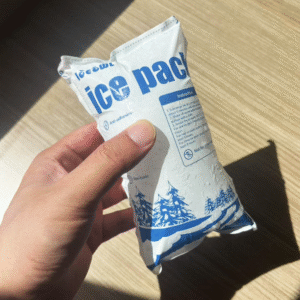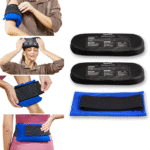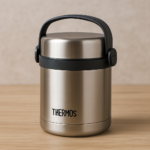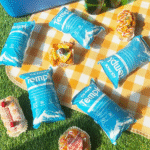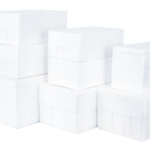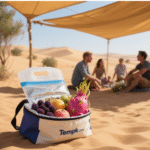Trockeneisbeutel gegen Trockeneis: Wie Sie wählen 2025
Zwischen dry ice packs vs dry ice directly sets your temperature control, compliance needs, und Gesamtkosten. Dry ice sits at −78.5 °C and typically sublimates about 5–10 Pfund pro 24h, while gel/PCM packs hold narrow set points for chilled or moderate frozen lanes. Pick the one that protects your product Und simplifies operations under current carrier and IATA rules.
-
When to use each option for 2–8 °C, soft‑frozen, deep‑frozen, and ultracold lanes
-
How to size coolant quickly with easy rules you can validate in a pilot run
-
2025 Compliance -Essentials (IATA/PHMSA/USPS) with practical labeling and venting tips
-
Sicherheit, kosten, and sustainability trade‑offs to reduce risk and spend
-
Actionable packout recipes you can put on your line today
When should you choose dry ice packs vs dry ice for each temperature target?
Kurze Antwort: Use gel/PCM packs for 2–8 °C and many “soft‑frozen” SKUs; use dry ice for deep‑frozen (≤ –20 ° C.) or ultracold needs. This prevents freezing delicate foods and keeps you compliant on routine parcel lanes. Add a small dry‑ice topper only when heat or long duration demands it.
Warum funktioniert das: Refrigerants “hold” near their phase‑change temperature. Water gels hold near 0 °C; PCMs can hold −7/−16/−21 °C; dry ice holds near −78.5 °C. Match the lowest allowable product temperature to the refrigerant so you avoid over‑freezing or warm‑ups during last‑mile spikes. Live seafood should nicht ship with dry ice; use gel/PCM with ventilation.
How do −21 °C PCMs compare to dry ice for frozen lanes?
Detail: −21 °C PCM bricks can keep many frozen foods within spec for 24–72 h in insulated shippers, while avoiding hazmat steps and contact‑burn risk. For lanes ≥72 h or ultracold payloads, dry ice still leads. Pilot a hybrid (PCM core + small dry‑ice topper) for hot seasons and variable routes.
| Kühloption | Typical target | Rough duration signal* | Was es für Sie bedeutet |
|---|---|---|---|
| Gel pack (0 ° C) | 2–8 ° C | 12–48H | Ideal for meal kits, Molkerei; simple ops |
| PCM –21 ° C. | Deep‑frozen alt | 24–72H | Wiederverwendbar; skip hazmat on many lanes |
| Trockeneis | ≤ –20 ° C. / Ultrakold | ~5–10 lb per 24 h | Lang, hot routes; requires venting & Etiketten |
* Validate with your payload mass, Isolierung, route, and weather.
Praktische Tipps
-
Chilled 2–8 °C, ≤48 h: Pre‑chill payload and box; use 0 °C gel packs around and above the load.
-
Ice cream −12 to −18 °C: Surround with −16/−21 °C PCM; add a small dry‑ice topper for heat waves.
-
Frozen swabs/vials: Use vented dry‑ice shippers; record net dry‑ice mass; follow PI 954 markings.
Real -World -Fall: A bakery cut melted cake returns by 92% by switching to −16 °C PCM + gel in summer, und a small dry‑ice topper for >48 h lanes—no move to all‑dry‑ice required.
How do you size dry ice packs vs dry ice fast—and safely?
Faustregel: Trockeneis: Plan ~5–10 Pfund pro 24h per carton. Gels/PCMs: start near 15–30% of payload mass for 2–8 °C lanes, then tune by testing. Always add a safety margin for summer routes and last‑mile delays.
Mach es praktisch: Start with these baselines in your hottest lane, add a temperature logger, and iterate. Für PCM, confirm full pre‑conditioning. For dry ice, avoid airtight containers and document net mass on the label.
Back‑of‑napkin formulas (copy/paste to your SOP)
Was 2025 rules most affect dry ice packs vs dry ice?
Luft (Iata): Trockeneis ist Und 1845, Klasse 9. Mark the proper shipping name, UN -Nummer, Und Netto -Dry -Ice -Masse; verwenden entlüftet Verpackung. Training and acceptance checks apply. USPS -Luft caps dry ice at ≤5 lb per mailpiece and bars most international mailings. Gel/PCM packs are typically non‑hazardous and skip these steps.
Carrier -Jobhilfen: Expect explicit label sizes, venting reminders, and address requirements from major carriers. Following the checklist reduces holds and rework for fulfillment teams.
How do safety and operations differ for dry ice packs vs dry ice?
Worker exposure: Provide ventilation where dry ice is staged; OSHA/NIOSH limits are 5,000 PPM TWA Und 30,000 ppm stel für Co₂. Keep shippers vented; never shrink‑wrap vents closed. Use cryogenic gloves; Vermeiden Sie direkten Kontakt.
Simpler handling with packs: Commercial gels/PCMs are typically non‑toxic and reusable; dispose of leaked gels per local guidance (trash, not drains). Clear recipient instructions prevent food‑contact issues and condensation damage.
What do cost and sustainability look like for dry ice packs vs dry ice?
Cost profile: Trockeneis ist a recurring consumable with availability swings tied to CO₂ supply; packs/PCMs are reusable assets with higher upfront cost but lower per‑turn spend. Hybridizing (PCM core + small dry‑ice topper) often wins for hot or uncertain lanes.
Nachhaltigkeit & EPR: Many regions are expanding packaging EPR programs in 2025. Reusable PCM programs and clear end‑of‑life instructions for gel packs can support compliance and reduce waste fees.
2025 trends reshaping dry ice packs vs dry ice
Trendübersicht: Updated IATA acceptance aids, persistent regional CO₂ tightness, broader adoption of −21 °C PCMs, and more asset‑tracking for two‑way pack recovery are changing decisions on every lane. Erwarten mehr validated PCM packouts for 2–8 °C and many frozen SKUs, with dry ice reserved for ultracold or ≥72 h extremes.
Letztes auf einen Blick
-
Prequalified 2–8 °C shippers pair PCMs with better insulation to reduce excursions.
-
FAA/industry notes emphasize pellet size, container design, and reuse impacts on sublimation—test your exact packout.
-
Asset programs expand, supporting EPR reporting and lowering consumable waste over time.
Market insight: CO₂ supply remains sensitive to by‑product streams and maintenance turnarounds. Keeping a PCM fallback in your playbook improves resilience during price spikes or outages.
User decision tool: which should Du use today?
-
Must your product arrive frozen (≤ –20 ° C.) or ultracold?
-
Yes → Start with Trockeneis; consider a Hybrid Für heiße Gassen.
-
No → Go Gel/PCM for 2–8 °C.
-
-
Is your trip ≥48 h in summer?
-
Frozen → Dry ice or hybrid; upgrade insulation.
-
Chilled → PCM with thicker walls; add a 15–25% safety margin.
-
-
Are you shipping by air/mail frequently?
-
Yes → Packs reduce hazmat friction and training.
-
If dry ice is required → Train, Etikett, and vent per 2025 Regeln.
-
FAQ
How much dry ice do I need for a 48‑hour shipment?
Planen 10–20 lb per carton (≈5–10 lb per 24 h) and validate by lane and insulation quality.
Can I mix gel/PCM and dry ice in one box?
Yes—many shippers use PCM around the product mehr small dry‑ice topper to extend hold time. Keep the shipper vented and labeled.
Are there postal limits for dry ice in the U.S.?
Ja. USPS -Luft: ≤5 lb per mailpiece; international is generally restricted. Always confirm the latest operator rules.
What about worker CO₂ exposure?
Folgen 5,000 PPM TWA / 30,000 ppm stel guidance, ventilate small rooms and vehicles, and use gloves.
What should I use for live seafood?
Verwenden Gel/PCM, not dry ice, to avoid asphyxiation risk from CO₂.
Zusammenfassung & Empfehlungen
Fazit: Dry ice packs vs dry ice maps to temperature, Dauer, und Compliance. Packs/PCMs excel at 2–8 ° C and many frozen lanes with lower hazmat friction; Trockeneis dominates ultracold and long, hot routes. Validate with small pilots and loggers before scaling.
Nächste Schritte:
-
Map each SKU to chilled vs frozen.
-
Build two standard packouts (PCM and dry‑ice/hybrid).
-
Run ISTA‑style validations for summer/winter.
-
Train teams on 2025 Etiketten, Entlüftung, und Sicherheit.
CTA: Bereit zu optimieren? Book a packout audit with Tempk.
Über Tempk
We design and validate cold‑chain packouts for food and pharma. Our reusable PCM and gel solutions reduce excursions, training time, and per‑turn costs, while our dry‑ice SOPs keep ultracold lanes compliant. Clients see fewer RMAs through right‑sized coolant mass, bessere Isolierung, and clean documentation aligned to 2025 Regeln.
Sprich mit uns: Get a lane‑by‑lane plan and a coolant calculator tailored to your SKUs.






